Britain’s Worst Cycle Lanes: Photos of That Olympics Legacy In Action
THE Warrington Cycle Campaign has been documenting cycle lanes and the people and things that block them.
Torbay council are congratulated for recognising just how tiring cycling is. This cycle lane in Paignton is equipped with loungers so that cyclists can take a quick power nap and awake refreshed before continuing on towards Torquay.

As an alternative to providing bike racks, Tesco in Fareham have pioneered the concept of the first ride-through shared-use supermarket.

After seeing the latest research into the possibility of driverless cars, Edinburgh council have developed a scheme to bring similar benefits to cyclists. Cyclists can simply slot their front wheel into this dual-use tram rail (carefully positioned in the middle of the cycle lane) and then not have to worry about steering; the rail will take care of the cyclist’s trajectory.

Too often, bollards in the middle of cycle paths are constructed to poor standards. However, no expense has been spared with this this one in the middle of national cycle route 55 outside Old Trafford footbal stadium.
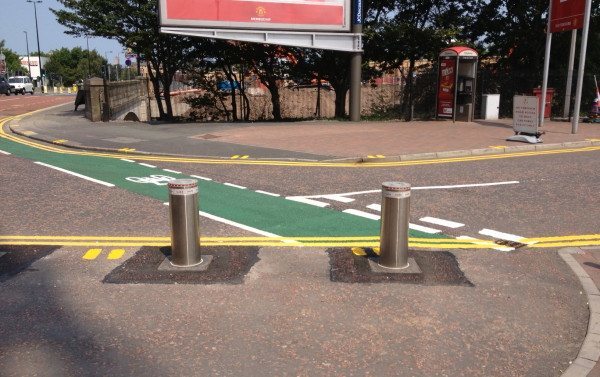
This handy lay-by on the Maultway, near the roundabout with Red Road near Deepcut enables tired cyclists to take a breather. The short dedicated left-filter cycle lane provided by Surrey County Council gives space for turning cyclists to decelerate before pulling off the road.
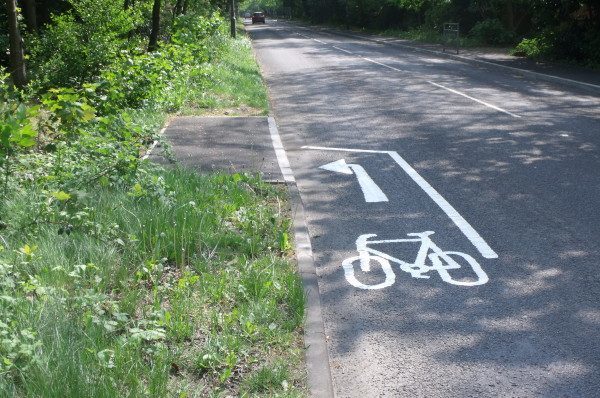
Reducing the volume of traffic is one of the most effective ways of improving conditions for cyclists. On this stretch of London Cycle Network Route 5, on Cavendish Road in Clapham, Lambeth Council have engineered a modest degree of traffic reduction … by prohibiting cycle traffic. Part of the Olympic Legacy.
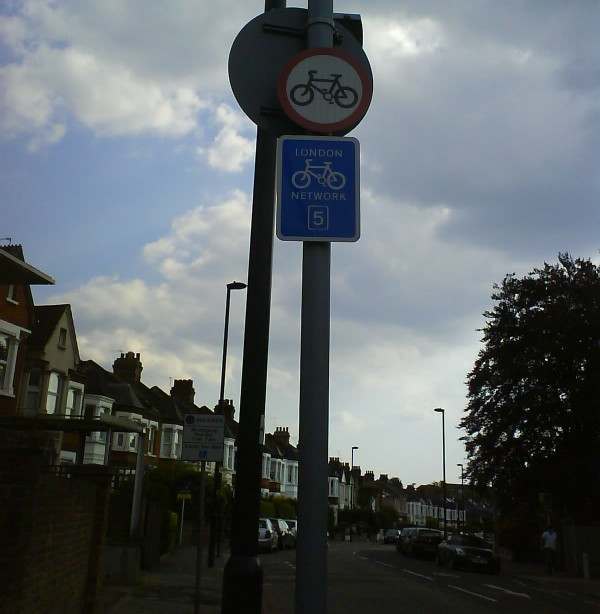
Sutton: When converting a pavement to shared use it is important to clearly indicate which part is allocated to cyclists and which is still safe for pedestrians.
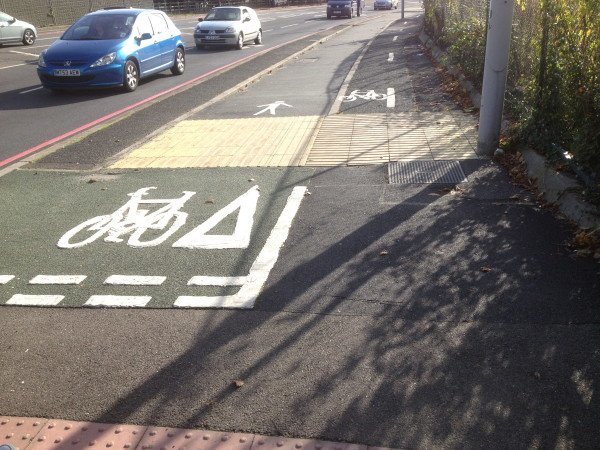
A key element required to enable the provision of cycle infrastructure is the reallocation of road space from motor vehicles. In this example on South End in Croydon, a couple of parking space have been reallocated create the space for a high quality ten metre long cycle lane.
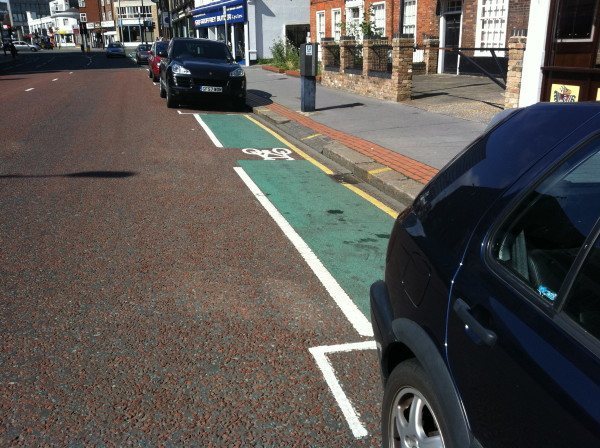
One of the most popular excuses given by councils for not providing cycling infrastructure is lack of space. However, as this example from Newcastle shows, even the narrowest of pavements can be successfully converted for shared use, with a sufficiently creative interpretation of the relevant standards.
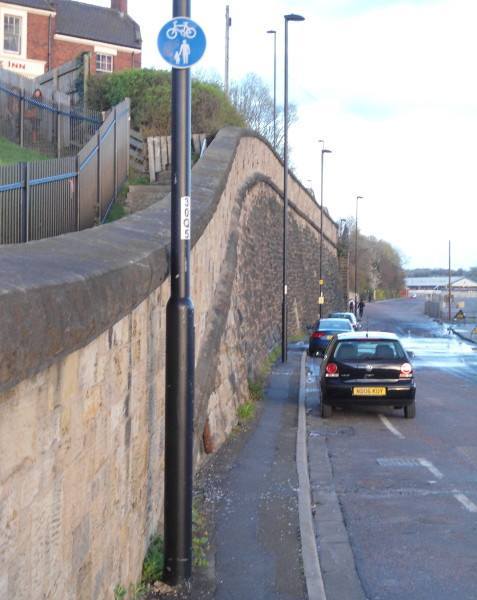
Just for those Hampshire cyclists like to surf the net while riding, Virgin Media have installed a broadband connection on this cycle path on Norris Hill Road in Fleet. It is also good to see that the attention paid to detail in the cycle path design to ensure that it has adequate drainage.
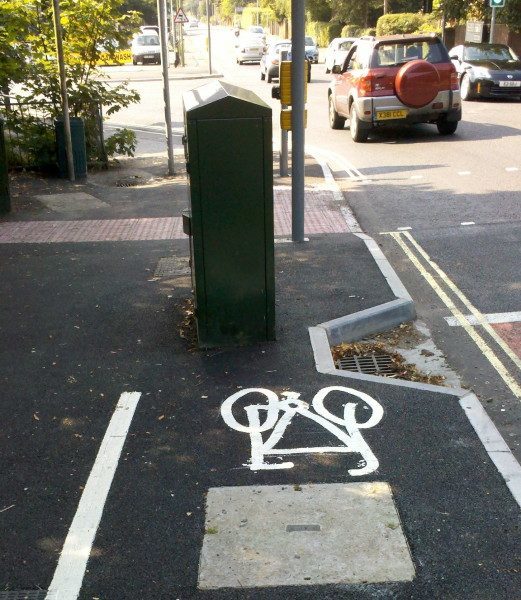
Good practice would normally dictate that cycle paths should maintain priority over side roads in order to achieve a continuous cycle route. However, in some cases this is not possible due to safety concerns. For example, this cycle path in Farnborough, which has been diverted into a lamp post.
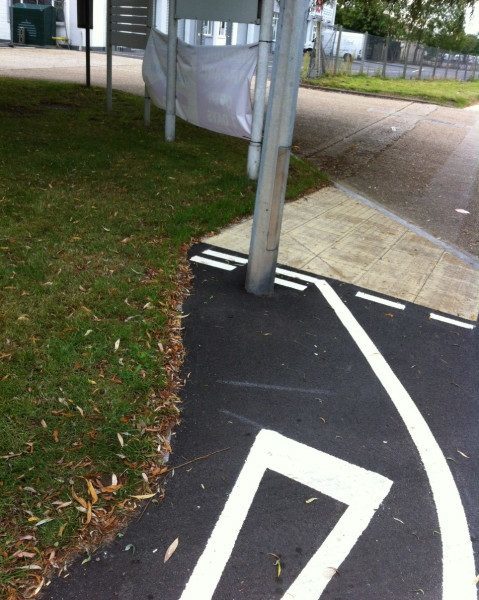
This month sees the Olympic Games come to London so we take this opportunity to showcase how the multi-million pound budget will leave a lasting legacy, promoting sustainable transport in East London.
A carefully crafted cycle lane, all of five bike lengths long, is thoughtfully and unusually positioned on a roundabout. Cars are helpfully warned that they aren’t to park here, and pedestrians prohibited from walking on it, but it is not clear how one should board and leave this excellent facility- perhaps a sprightly BMX style bunny hop over the elegant fence?
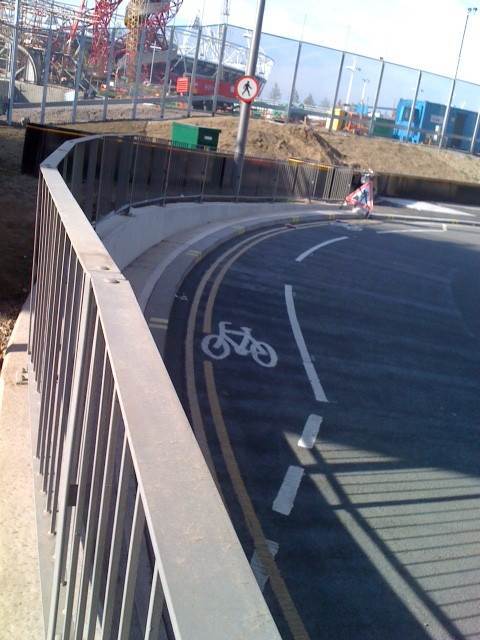
Shared-use cycle facilities require careful design to avoid conflict between different users. In this example in Hillingdon the white lines have been strategically positioned to enable cyclists to share this bus shelter with pedestrians.
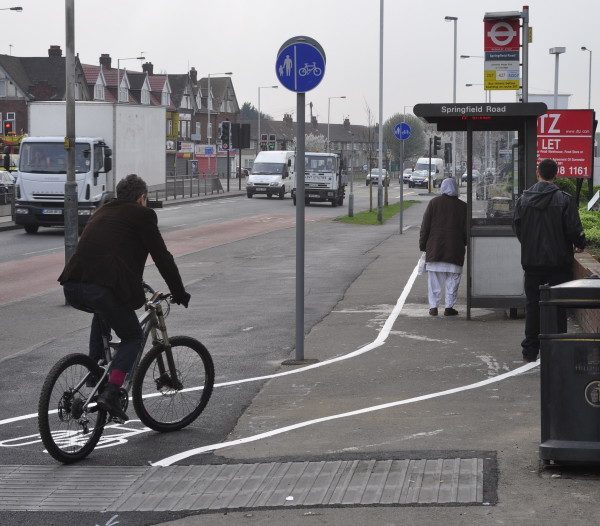
Sometimes cyclists are nervous about riding in busy traffic. To give extra confidence to those joining the A4 Great West Road at Gillette Corner in Hounslow, this strategically placed phone box conceals the approaching traffic thus giving the impression of a quieter road.
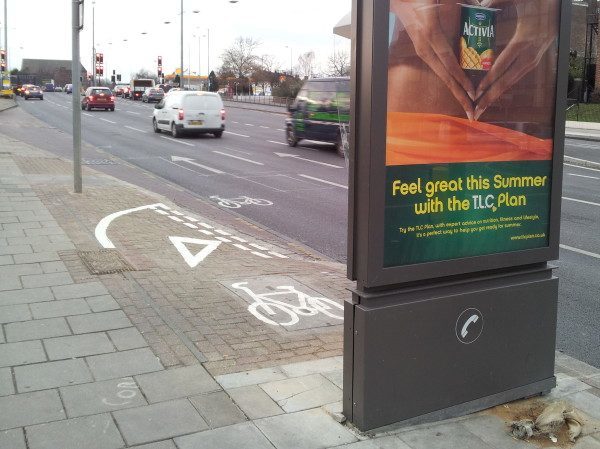
Sometimes it can be difficult to see faded road markings in poor weather conditions. To overcome this problem, Kent County Council have installed these reflective posts along a cycle lane on the A226 Gravesend Road in Higham. Now the cycle lane is clearly visible even with typical bike lights on the foggiest of nights.
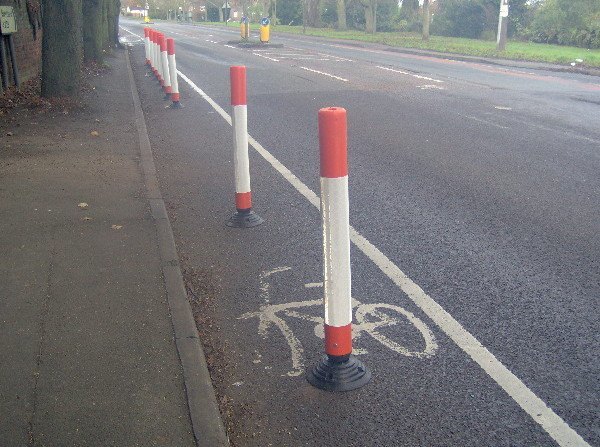
Lancashire highway engineers were concerned that drivers might mistake this cycle bypass in Woodplumpton for a parking bay. Fortunately, the generous dimensions of the cycle lane are just sufficient to accommodate double yellow lines.
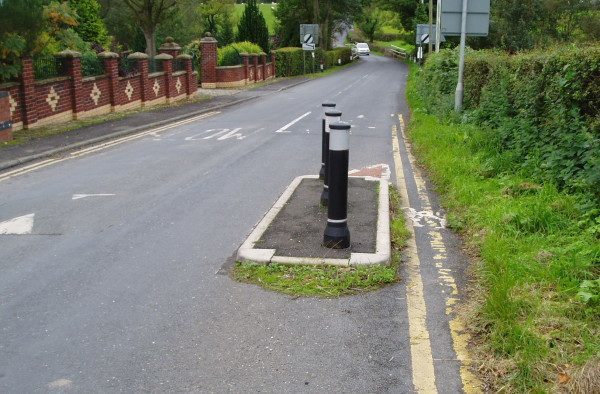
Old Colwyn Promenade has traditionally been used as a quiet and scenic ride to Colwyn Bay. However, when they were designing the stretch of national cycle network route 5 along the prom, they noticed cyclists returning after a night out on the town tended to follow a more weaving line, so designed this cycle lane accordingly.
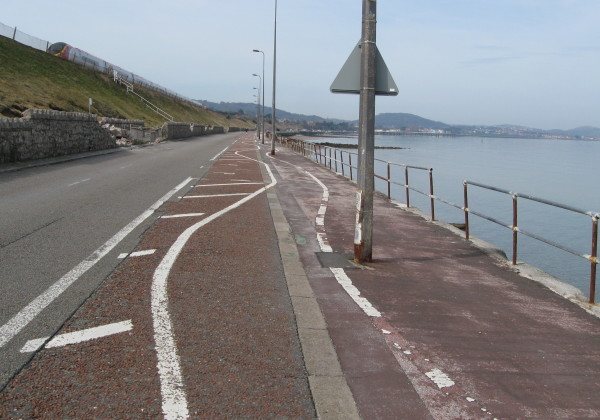
Cycle paths can often become unusable due to parked cars obstructing the way. In this case Derbyshire County Council has ensured that cyclists have unrestricted access to this cycle path in Chesterfield by imposing 24 hour parking and loading restrictions at both ends of the path.

In order to provide a respite from the blistering heat of a Grimsby summer, North East Lincolnshire Council have planted an avenue of trees along this cycle-path to shade cyclists from the sun.
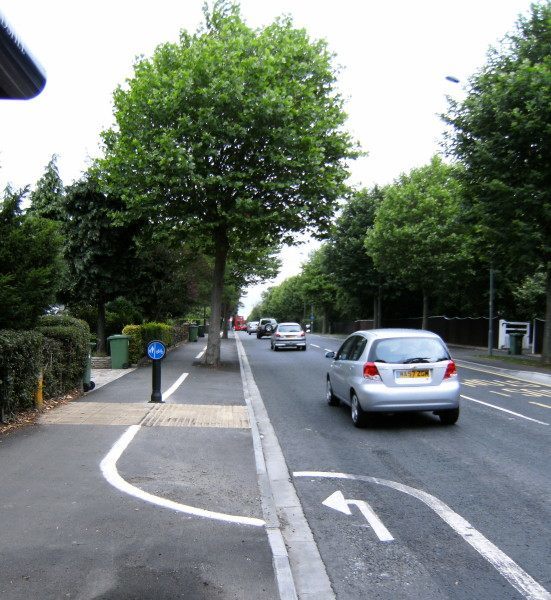
In this example on National Cycle Network Route 67 in Chesterfield there was a persistent problem of cyclists riding illegally on the pedestrian side of the path. Now that the council have installed tactile paving, all cyclists are aware which side of the path they should use.
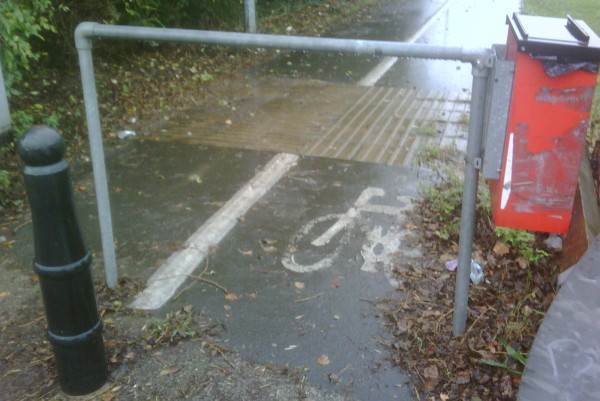
The end of this 5m long cycle path in Enfield is, however, very clearly indicated. This leaves cyclists in no doubt that they should rejoin the road at this point. This is particularly important in this instance as some cyclists may be reluctant to ride against the flow of traffic on a dual-carriageway.

Anyone arriving with their bike at Balmossie Station near Dundee is sure to find their way onto National Cycle Network route 1 due to the exceptionally clear sign posting

It is hard to beat cycling in terms of speed and convenience for short door-to-door journeys. This is well illustrated by this example from Stafford. The cycle lane provides a direct, continuous route from the front door of number 5 Bailey Street to the door of number 7.
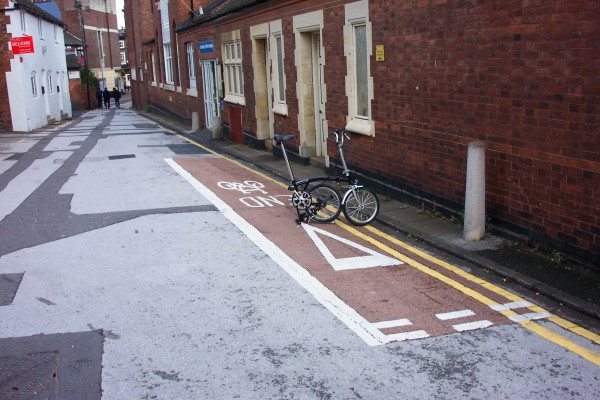
This very short shared use facility on Erith High Street has been painted in a tasteful shade of green, to blend in seamlessly with the surrounding street scene.

Surrey County Council discovered that cyclists were enjoying this mini-roundabout in Woking so much that they provided a boomerang cycle path; now riders can loop back and do it all over again
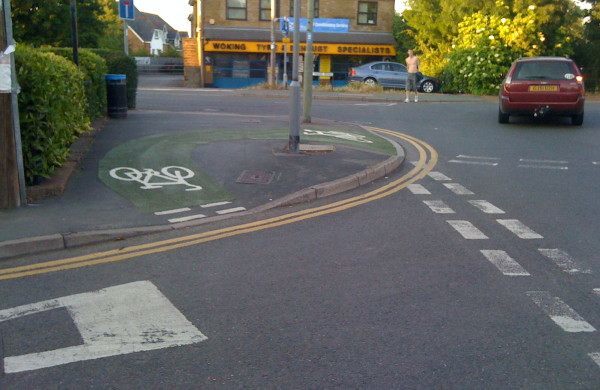
Canal banks can provide excellent, attractive, hill-free cycle routes. This example from Volendam, The Netherlands, shows that a safe traffic free path can be created, even when space is at a premium.
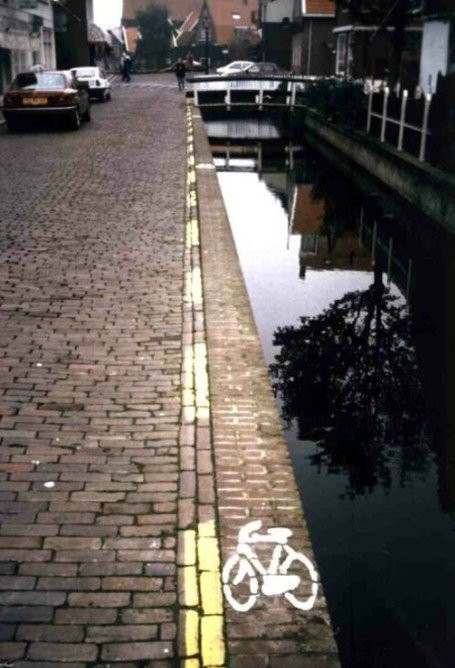
It’s a common misconception that cycle lanes offer a traffic free environment. To counter this, the city of Dana Point, California installed this large sign warning cyclists that they may encounter other bikes using the bike lane.
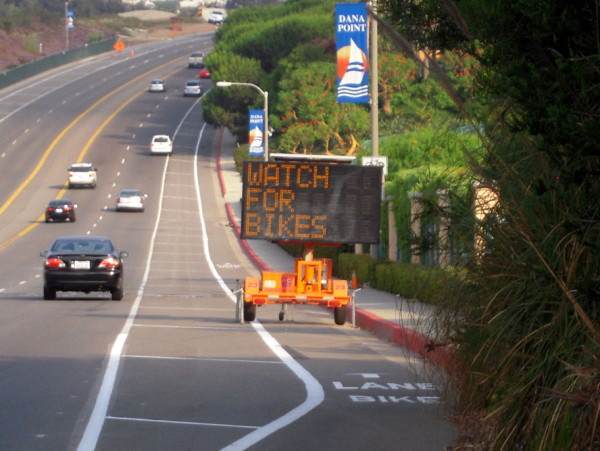
After watching an episode of Star Trek, the forward looking traffic planners of Oxford were thinking about how transport infrastructure would work in the middle of the next century. Boldly predicting that by then bicycles would be equipped with teleportation devices they realised that they could save a lot of paint by designing intermittent cycle paths, with cyclists able to beam themselves from one stretch to the next.
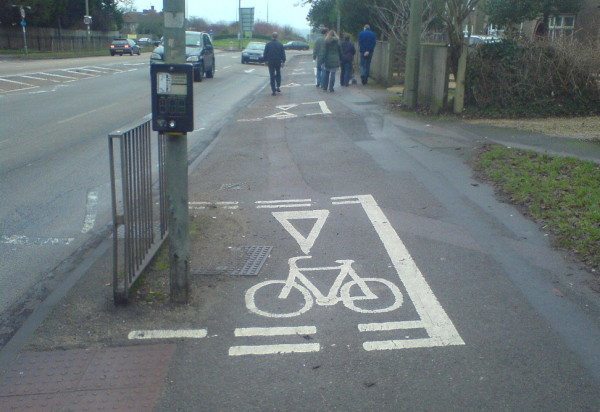
This month we congratulate Richmond Borough Council for attention to detail in the construction of this shared-use path on Broad Street, Teddington. The carefully placed safety barrier minimises the potential for conflict between cyclists and pedestrians.

In their eagerness compete for the spending power of Southwark’s cyclists, Sainsbury’s have provided this convenient short cut for cyclists wishing to shop at their store at Dog Kennel Hill, East Dulwich.
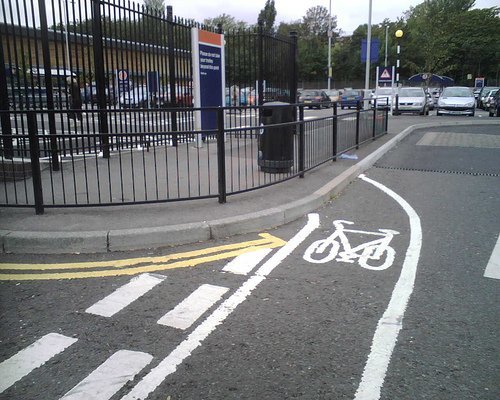
Essex County Council is promoting cycling as an effective and enjoyable form of aerobic exercise to reduce the incidence heart disease, high blood pressure and obesity in the county. Unfortunately it was discovered that, rather than pedalling briskly, Harlow’s cyclists were freewheeling down this gently sloping path. To counter this, signs have been introduced at regular intervals requiring cyclists to get off and walk.
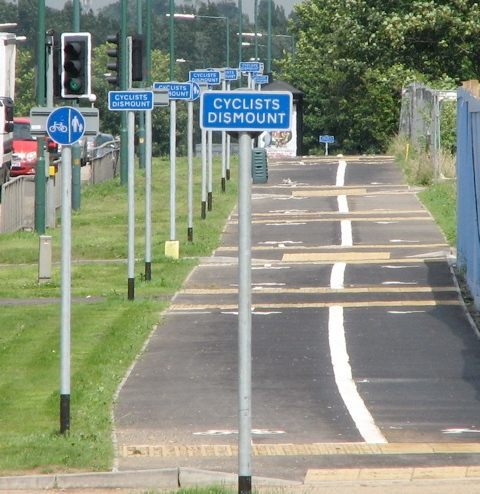
This month’s facility can be found in Hulme, Manchester. The planners have thoughtfully provided lighting at 5m intervals along the entire length of this cycle route. Clear directions ensure that cyclists know which way to swerve in order to avoid riding straight into the lamppost at the far end.
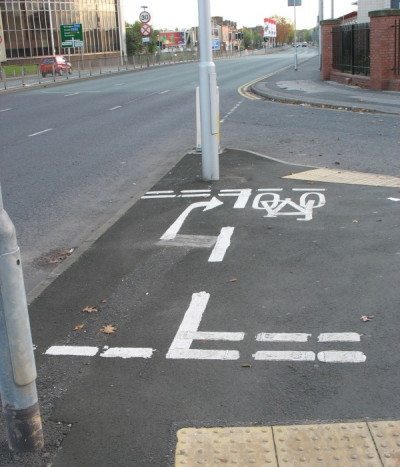
Greenwich Council conducted extensive research on the factors that deter people from cycling. They discovered that a major reason for people choosing to drive rather than cycle was their fear of being seen in public. To counter this they have started to introduce signs at crossing points instructing pedestrians to look away from approaching cyclists.
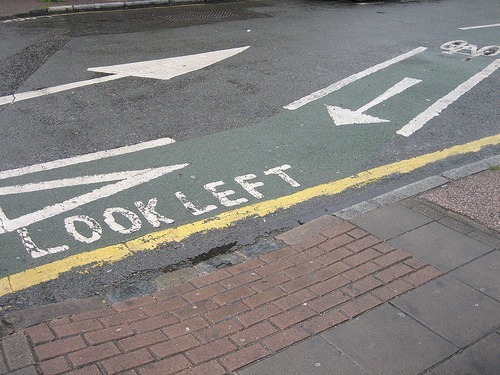
This facility is at the heart of Coventry’s bid to host the 2020 Olympics. The state-of-the-art stadium provides covered seating for six spectators, with an uninterrupted view of the 5m sprint pursuit event.

This facility on Bardwell Road in Oxford demonstrates the advantage of painting a solid white line to indicate a mandatory rather than advisory cycle lane. Motor vehicles are not permitted to enter, so the lane is kept clear of parked cars for its entire length.
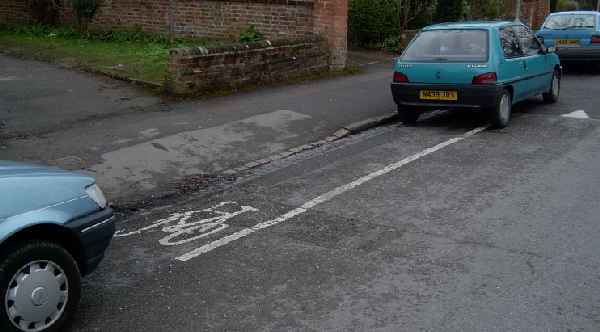
The problem of motorbikes abusing cycle paths is becoming more widespread. We think this solution from York will deter all but the most determined motorcyclists.
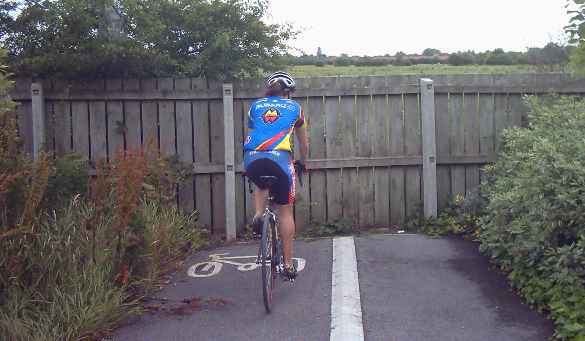
More Galleries
Posted: 14th, November 2013 | In: In Pictures, Sports 13 Comments | TrackBack | Permalink








